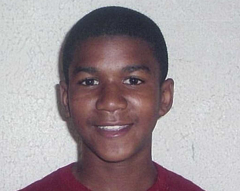 Last summer, as the nation awaited a verdict in the murder trial of George Zimmerman for the shooting death of Trayvon Martin, msnbc reporter Trymaine Lee and award-winning photographer Wayne Lawrence spent time in the historic African-American community of Goldsboro, not far from where Martin was killed, to examine the social and economic state of the neighborhood before and after the teen’s death.
Last summer, as the nation awaited a verdict in the murder trial of George Zimmerman for the shooting death of Trayvon Martin, msnbc reporter Trymaine Lee and award-winning photographer Wayne Lawrence spent time in the historic African-American community of Goldsboro, not far from where Martin was killed, to examine the social and economic state of the neighborhood before and after the teen’s death.
In interviews and images, the people of Goldsboro tell their stories of struggle, resilience and what’s it’s like to be Black in Sanford.
It’s been two years this week since 17-year-old high school student Trayvon Martin was shot to death in Sanford, Fla. And just about seven months since his killer, George Zimmerman, was acquitted of murder charges in Martin’s death.
Zimmerman claimed he killed the unarmed teen in self-defense. Over the summer, a jury of six believed him, clearing him of any wrongdoing in Martin’s death. While the criminal case against Zimmerman was put to bed with the verdict, the broader social implications of the case continue to ripple from Sanford and beyond.
But long before Martin’s killing sparked anger and protests across the country and drew thousands to this central Florida city once known as the “Celery Capital of the World,” Sanford’s Black communities had been wrestling with racial strife and economic inequality.
Like so many other American towns, Sanford is two largely distinct worlds: one white and one Black. Most of Sanford’s African-American residents live in a handful of neighborhoods like Goldsboro and Midway, where employment opportunities are few and poverty and hopelessness run high. Violence, including gunfire, is common. And many Black residents complain of harsh, unfair treatment by the police.
It was in Goldsboro, a community haunted by generations of segregation and oppression, that the first protests after Martin’s killing began.
Income and achievement gaps in Sanford have widened in the decades since Civil Rights era victories had theoretically thinned the boundaries between the races. And more recent efforts to highlight and celebrate the vast contributions of Sanford’s Black community have been a welcomed respite from a history fraught with as much pain as hope.
MSNBC Trymaine Lee, Amy Pereira and Maria Lokke, contributed to this story.



